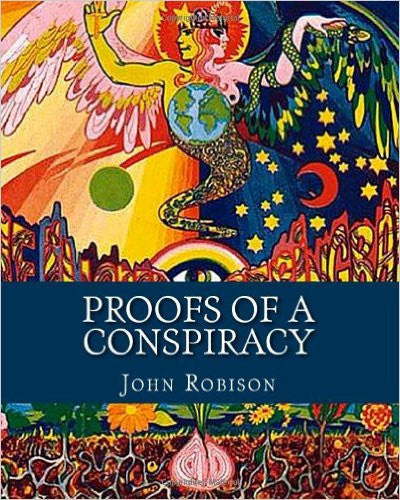
Proofs of a Conspiracy: Against all the Religions and Governments of Europe, Carried on in the Secret Meetings of Freemasons, Illuminati and Reading Societies
$16.95
John Robison (1739-1805) was a Scottish scientist, who late in life wrote the one of the definitive studies of the Bavarian Illuminati. He was a contemporary and collaborator with James Watt, with whom he worked on an early steam car, contributor to the 1797 Encylopedia Britannica, professor of philosophy at the University of Edinburgh, and inventor of the siren. Although Robison was very much an advocate of science and rationalism, in later life, disillusioned by the French Revolution, he became an ardent monarchist. In this work, Proofs of a Conspiracy, Robison laid the groundwork for modern conspiracy theorists by implicating the Bavarian Illuminati as responsible for the excesses of the French Revolution. The Bavarian Illuminati, a rationalist secret society, was founded by Adam Weishaupt in 1776 in what is today Germany. They had an inner core of true believers, who secretly held radical atheist, anti-monarchist and possibly proto-feminist views, at that time considered beyond the pale. They recruited by infiltrating the numerous (and otherwise benign) Freemasonic groups which were active at the time on the continent. Necessarily they had a clandestine, compartmentalized, hierarchical organizational form, which has led some modern conspiracy theorists to identify them as the original Marxist-Leninist group. However, this is most likely simply a case of parallel evolution. Since we don't have convenient access to the source documents of the Bavarian Illuminati we have to rely on Robison and the Abb Barruel's Memoirs Illustrating the History of Jacobinism, both in the 'opposing views' category, for information on this group. The Illuminati have today become a byword for a secret society which hoodwinks its junior members and puppet-masters society at large. This reputation is in no little part due to Robison's book. However, reading between the lines, it becomes obvious that the Bavarian Illuminati were what the American Old Left called a 'talk shop,' barely able to organize a picnic, let alone the Terror. Instead, it seems, they were only expressing views widespread in intellectual circles of the day. They were not, as Robison claims, the fuse that lit the downfall of the French Monarchy. Nonetheless, this book make fascinating reading, and in conjunction with other historical accounts of the French Revolution, helps dimensionalize the period for students of history.




